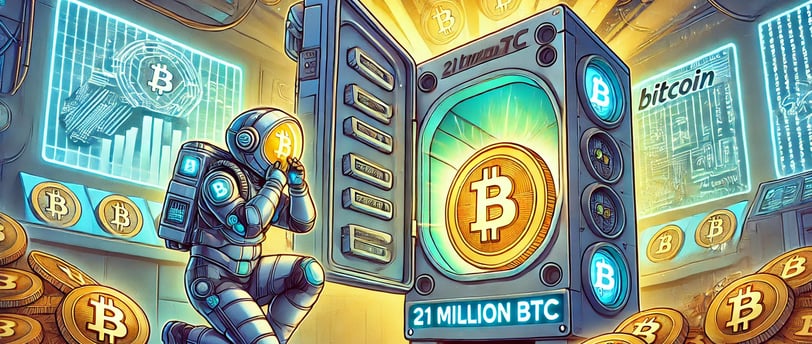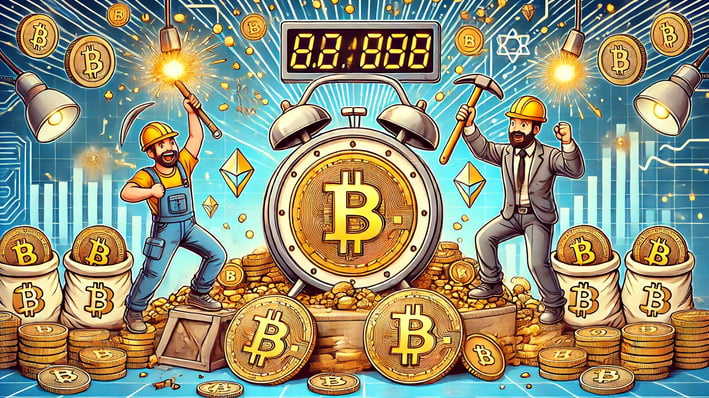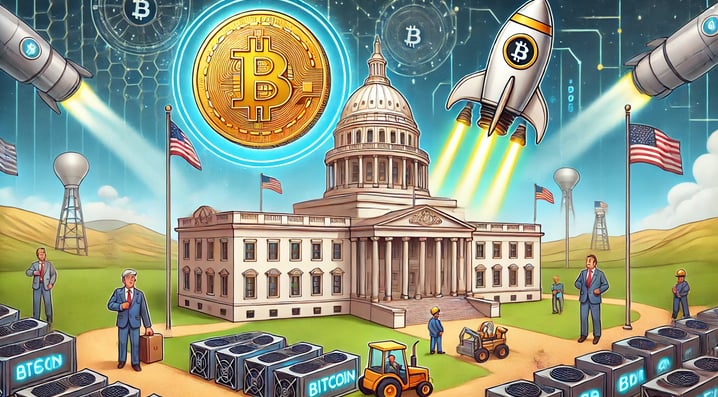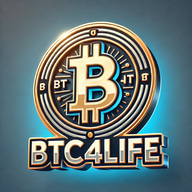What Happens When the Last BTC Is Mined?
Bitcoin’s hard cap of 21 million coins ensures scarcity, but what happens when the final BTC is mined? This article explores the future of Bitcoin mining, transaction fees, hyperbitcoinization, and the role of governments and institutions in securing the network. Discover how Bitcoin could evolve into the dominant global financial system.
4 min read


What Happens When the Last Bitcoin is Mined?
Introduction
Bitcoin's finite supply is one of its most defining features. Unlike fiat currencies, which can be printed indefinitely, Bitcoin has a hard cap of 21 million coins. But what happens when the last Bitcoin is mined?
This question has intrigued investors, economists, and Bitcoin maximalists alike. Key questions arise:
Will Bitcoin mining continue?
How will the network sustain itself?
What role will Bitcoin play in the future economy?
In this article, we explore the implications of reaching Bitcoin’s maximum supply and what the future holds for the world's first decentralized digital currency.
Understanding Bitcoin Mining and Halving
Bitcoin mining is the process by which new BTC enters circulation. Miners use powerful computers to: ✅ Validate transactions
✅ Secure the network by solving complex cryptographic puzzles
✅ Receive newly minted Bitcoin and transaction fees as rewards
However, Bitcoin's issuance rate is not static. Roughly every four years, the block reward is cut in half through a process known as Bitcoin halving. Here’s a history of halvings:
2012: Reduced to 25 BTC per block
2016: Reduced to 12.5 BTC per block
2020: Reduced to 6.25 BTC per block
2024: Reduced to 3.125 BTC per block
🔹 The halvings will continue until 2140, when the final fraction of a Bitcoin is mined, reaching the 21 million BTC limit.
Why Halving Exists and What Makes Bitcoin Valuable
Bitcoin halvings serve a critical purpose: ensuring long-term scarcity and controlling inflation. Unlike fiat money, Bitcoin’s fixed supply prevents excessive issuance, protecting its value.
Two key properties underpin Bitcoin’s value:
1. Decentralization – No government, corporation, or single entity controls Bitcoin, making it immune to censorship and manipulation.
2. Scarcity – With a limited supply of 21 million coins, Bitcoin mimics gold’s scarcity, making it an attractive store of value.
🔺 As demand increases while supply dwindles, Bitcoin’s price is expected to rise over time, reinforcing its deflationary nature.
What Happens When the Last Bitcoin is Mined?
Once the final Bitcoin is mined in 2140, no new BTC will enter circulation. This raises a crucial question:
➡️ Will transaction fees be enough to sustain Bitcoin mining?
Possible Outcomes:
✔️ Transaction Fees as Incentives – As Bitcoin adoption grows, transaction volume will increase, leading to higher fees that incentivize miners.
✔️ High Bitcoin Value – By 2140, Bitcoin could be so valuable that even small fees would be enough to maintain network security.
Bitcoin as a Unit of Account: The Next Phase
Currently, Bitcoin is primarily seen as a store of value, like digital gold. However, many experts predict Bitcoin will eventually evolve into a unit of account, meaning goods and services will be priced directly in BTC rather than fiat currencies.
This transition is called Hyperbitcoinization:
📌 Bitcoin becomes the dominant form of money
📌 More people prefer pricing assets in Bitcoin
📌 Fiat currencies devalue as Bitcoin adoption rises
What experts say:
Saifedean Ammous (author of The Bitcoin Standard): Fiat devaluation will push people to price everything in Bitcoin.
Michael Saylor: Bitcoin will demonetize weaker currencies and become the global economic standard.
🔹 If this occurs, everyday transactions will sustain the Bitcoin network, ensuring miners remain incentivized without block rewards.
What Bitcoin Experts Predict
Several Bitcoin thought leaders have weighed in on Bitcoin’s future:
💡 Michael Saylor – Bitcoin will absorb monetary energy from weaker assets and replace gold as the primary store of value.
💡 Jack Dorsey – Bitcoin has the potential to become the native currency of the internet, driving financial inclusion worldwide.
💡 Adam Back – Bitcoin’s security model will remain intact as transaction fees become the primary miner incentive.
💡 Nick Szabo – Bitcoin’s digital scarcity and resistance to government control will make it the ultimate global currency.
💡 Max Keiser – Bitcoin’s increasing scarcity will lead to fiat devaluation, pushing the world toward BTC adoption.
🔺 These experts foresee a future where Bitcoin is not only a store of value but also a unit of account for everyday transactions.
Will Governments and Institutions Engage in Bitcoin Mining?
As Bitcoin adoption increases, governments and financial institutions may actively participate in securing the network. This trend is already emerging:
🌍 Russia – Legalized Bitcoin mining for international trade
🌍 Iran – Mines Bitcoin to bypass financial sanctions
🌍 China – Despite bans, still contributes significantly to the global hashrate
Why governments might mine Bitcoin in the future:
✔️ Strategic Reserves – Holding BTC as a national asset, similar to gold reserves.
✔️ Preventing Domination – Ensuring no single nation controls Bitcoin mining power.
✔️ Economic Security – Participating in mining to prevent economic coercion via digital means.
🔹 Bitcoin’s decentralization prevents any one entity from controlling it, but governments may compete for mining influence just as they do for energy and financial dominance today.
Final Thoughts
The mining of the last Bitcoin will be a significant milestone, but it does not mean the end of Bitcoin. Instead, it will mark a new phase where Bitcoin’s security relies on transaction fees rather than block rewards.
Key takeaways:
✅ Transaction fees and increased adoption will sustain mining.
✅ Bitcoin could become a global unit of account through hyperbitcoinization.
✅ Institutions and governments may play a larger role in Bitcoin mining.
✅ Bitcoin’s decentralized nature ensures long-term resilience and security.
🔺 While some uncertainties remain, Bitcoin maximalists believe its economic incentives and decentralized architecture will make it the dominant global currency of the future.
🚀 The next few decades will be crucial in determining Bitcoin’s role in the future financial system!




